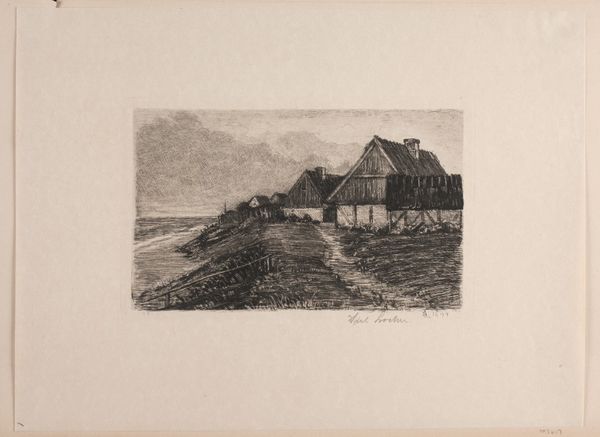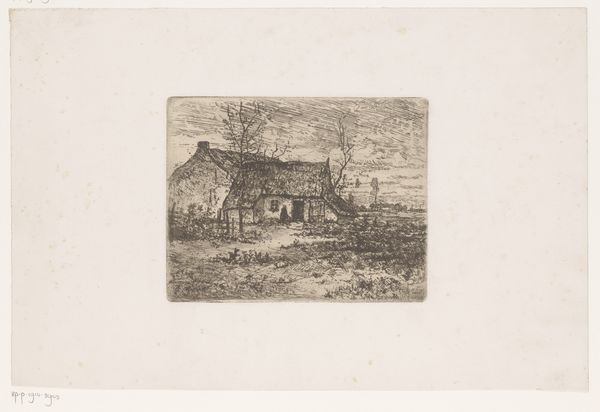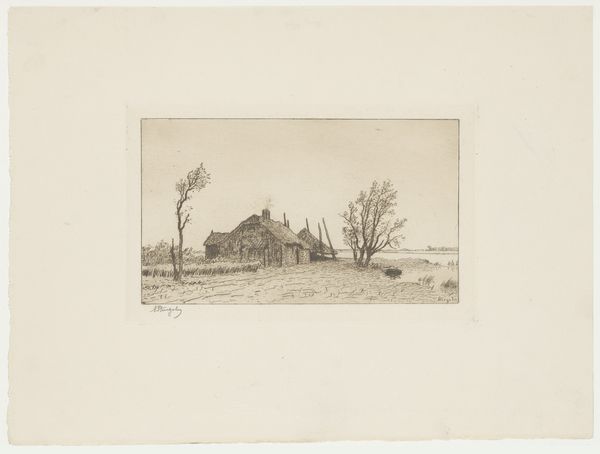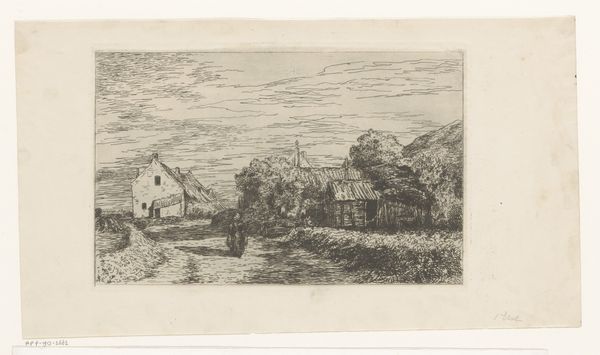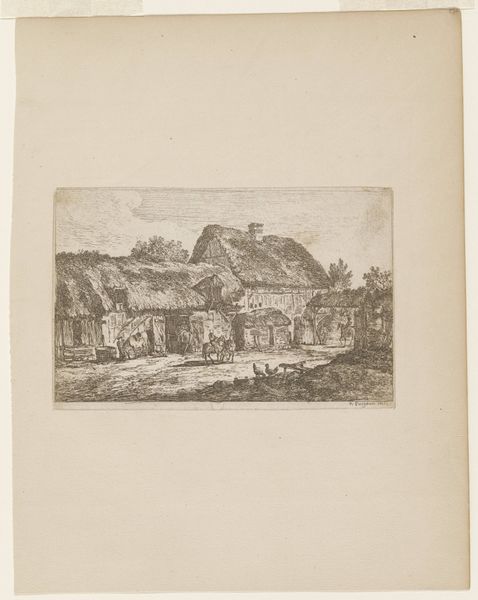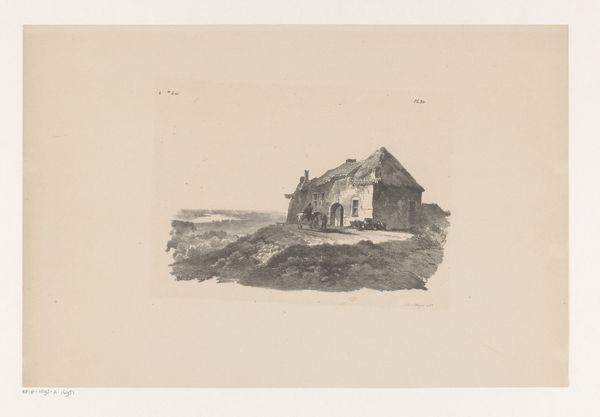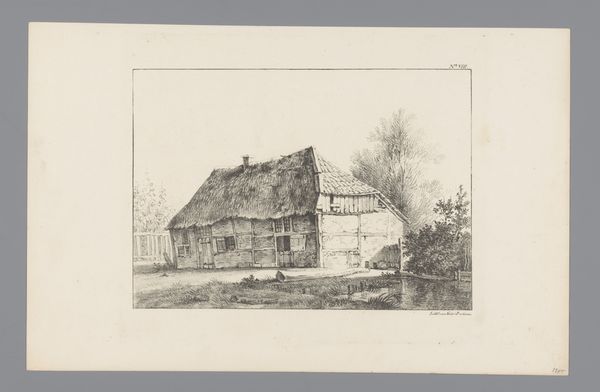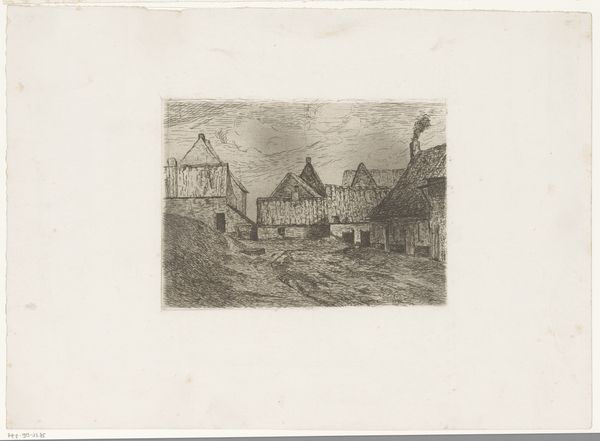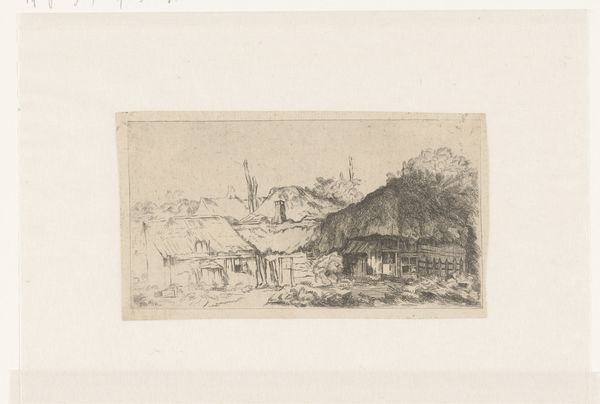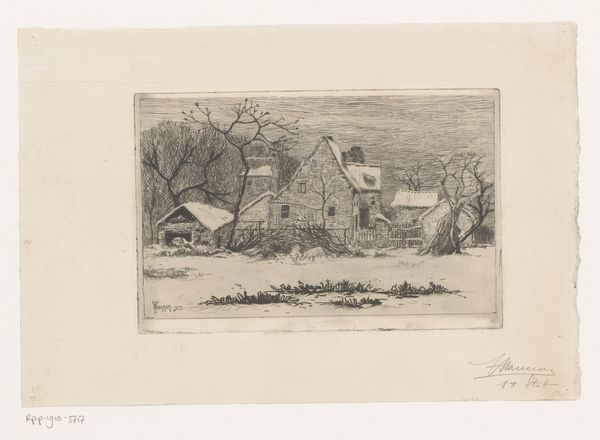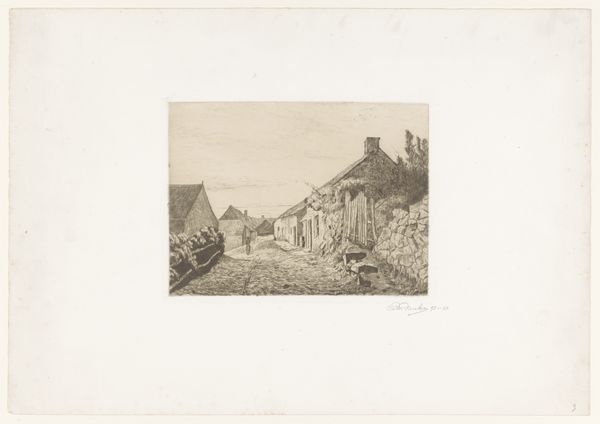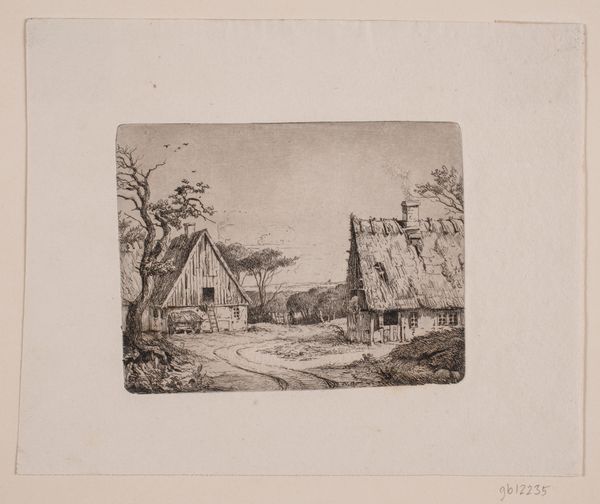
print, etching
# print
#
etching
#
landscape
#
northern-renaissance
#
realism
Dimensions: 173 mm (height) x 268 mm (width) (Plademål)
Axel Locher made this etching of Tisvilde, likely in the early 20th century. The magic of an etching lies in its making. A metal plate, probably copper, is coated with a waxy, acid-resistant substance. The artist then draws through this coating with a sharp needle, exposing the metal. Next, the plate is submerged in acid, which bites into the exposed lines. These incised lines are what will hold the ink. The longer the plate soaks, the deeper and darker the lines will be in the final print. The plate is then inked, and the surface wiped clean, leaving ink only in the etched lines. Finally, damp paper is pressed against the plate, transferring the image. Locher’s skillful handling of the etching process really brings out the ruggedness of the buildings and landscape. The textured lines give the scene a tactile quality, as if you could reach out and feel the rough wood of the houses, or the gritty sand of the beach. The social context of printmaking is important here. Unlike a unique painting or sculpture, etchings can be reproduced, making art more accessible. This democratizing aspect is what gives prints their ongoing appeal, blurring the lines between high art and everyday life.
Comments
No comments
Be the first to comment and join the conversation on the ultimate creative platform.
